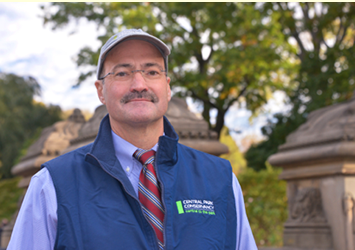People
- Congratulations to Therese O'Malley, retiring from the Center, National Gallery (1982-2021)
- 2020 Place Maker / Place Keeper Honorees
- Congratulations to Elizabeth K. Meyer!
- Congratulations to Reuben Rainey!
- Meet Betsy Smith, newly appointed president of the Central Park Conservancy as she steps into the shoes of Douglas Blonsky
- As retiring president and CEO of the Central Park Conservancy, Douglas Blonsky leaves behind an extraordinary legacy
- Board Member Robin Karson made honorary member of the American Society of Landscape Architects
- Board Member Laurie Olin is honored by the National Building Museum
- Gold Medal Winner
- Women Who Made New York
- Germany's Green Prince
- 2016 Place Maker / Place Keeper Honorees
- 2015 Place Maker / Place Keeper / Lifetime Achievement Honorees
- Kudos for Board Member Laurie Olin
- Celebrate our 2014 Place Maker and Place Keeper Awardees
- Pillar of New York Award
- Spotlight on Board Members
As retiring president and CEO of the Central Park Conservancy, Douglas Blonsky leaves behind an extraordinary legacy
 With a career spanning thirty-three years, Douglas Blonsky has helped bring this world-famous landscape from the brink of destruction to its current glory as New York City’s chief oasis of nature and recreation. Hired by the Conservancy’s founding president Elizabeth Barlow Rogers in 1985, Blonsky served as manager of the public-private partnership’s first carpentry and masonry restoration crew and subsequently as head of its office of landscape design and construction. In 1998 he became the Central Park administrator, a Parks Department position, and in 2004 he was selected to occupy the dual role of park administrator and Conservancy president / CEO. Upon his retirement announcement last June 6, his record of accomplishment was recounted in the New York Times in terms of highest praise.
With a career spanning thirty-three years, Douglas Blonsky has helped bring this world-famous landscape from the brink of destruction to its current glory as New York City’s chief oasis of nature and recreation. Hired by the Conservancy’s founding president Elizabeth Barlow Rogers in 1985, Blonsky served as manager of the public-private partnership’s first carpentry and masonry restoration crew and subsequently as head of its office of landscape design and construction. In 1998 he became the Central Park administrator, a Parks Department position, and in 2004 he was selected to occupy the dual role of park administrator and Conservancy president / CEO. Upon his retirement announcement last June 6, his record of accomplishment was recounted in the New York Times in terms of highest praise.
According to Rogers, “Trained as a landscape architect, Doug has a superb grasp the art of historic park restoration. The park speaks for itself. Because each restoration project has added to its overall beauty, he has been able to interest an ever-increasing body of donors to support the Conservancy. But restoration alone is not enough. Without good day-to-day management, it would soon deteriorate again. When I asked Doug recently to comment on the ways in which strategic park management works both in Central Park and as a model for parks elsewhere, he said, ‘It is really based on constant oversight of every section of the park as well as the digital technology that facilitates the collection of a multiplicity of park-wide data. Here is an example: the zone gardener will walk his or her site daily and report such things as a broken bench or tree limb to the section supervisor, who in turn will relay this information to our maintenance headquarters at the Seventy-Ninth Street Yard where it will be logged into a database. This provides a way to determine what level of attention is required, prioritize the tasks that need to be done, and develop a schedule for dispatching the appropriate staff or outside contractor.’ As he described this paragon of park management and how the work of the current field personnel is supplemented by three hundred and fifty regular volunteers, I thought to myself, ‘Wow, how far things have come since the early days of the Conservancy when I was organizing school groups, summer interns, and a few green thumbs to pull weeds and perform some other horticultural good deeds in random locations – now the volunteers are a regular army!’ ”
Fortunately, Blonsky will still be on hand as an advisor to the Conservancy-run Institute for Urban Parks. As he transitions seamlessly into this new role, he says, “I am excited about sharing what the Conservancy has developed and learned over the past thirty-eight years with parks locally, nationally, and elsewhere throughout the world."
